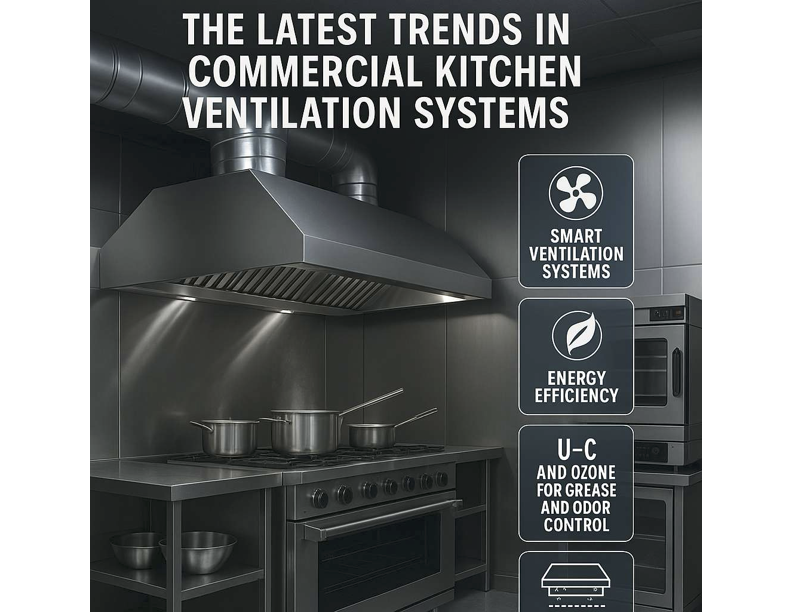Commercial kitchen ventilation isn’t just about clearing the air — it’s a frontline defense for safety, energy efficiency, and compliance. As regulations tighten and margins get thinner, the industry is evolving fast. Here’s a clear, up-to-date look at where commercial kitchen ventilation is heading and why it matters.
1. Smart Ventilation Systems Are Taking Over
Modern kitchens are embracing automation, and ventilation is no exception. Demand-controlled ventilation (DCV) systems are now widely adopted. These systems use sensors to monitor heat, smoke, and humidity levels, adjusting fan speeds in real time. The result: energy savings of up to 50% and quieter operation during off-peak hours.
Key tech to watch:
-
Temperature and smoke sensors
-
Variable frequency drives (VFDs)
-
Integration with Building Management Systems (BMS)
2. Energy Efficiency Is Now Non-Negotiable
With energy prices and environmental pressures both climbing, commercial kitchens are investing in systems that lower operational costs and carbon footprints. Ventilation systems now come with energy recovery units (ERVs) and heat exchangers that repurpose exhaust heat to pre-warm incoming air. This reduces the HVAC load and cuts utility bills.
Bonus: Many jurisdictions now offer incentives or rebates for upgrading to high-efficiency systems.
3. UV-C and Ozone for Grease and Odor Control
Old-school filters and baffles are still standard, but new technologies are getting serious attention. UV-C light systems and ozone generators are being used to break down grease particles and eliminate odors at the molecular level. These upgrades mean cleaner ducts, reduced fire risk, and fewer complaints from neighboring businesses.
4. Modular Hood Systems
Restaurants with smaller footprints — ghost kitchens, food trucks, and fast-casual chains — are leaning toward compact, modular hood systems. These systems are easier to install, maintain, and reconfigure when the menu changes or operations shift.
Why it matters: Flexibility is key in an industry where pivots are part of survival.
5. Quieter, Cleaner Operations
Customer experience is king — even in the back of house. Newer systems are being engineered for noise reduction. That includes insulated ductwork, low-decibel fans, and smart control panels that avoid unnecessary fan speeds. Cleaner, quieter kitchens mean better working conditions for staff and a more professional image overall.
6. Code Compliance Built In
Compliance isn’t optional, and manufacturers know it. The latest ventilation systems are being designed with UL listings, NFPA 96 standards, and local building codes already baked in. This simplifies permitting and inspections, and reduces headaches during renovation or expansion.
Final Thought
Ventilation may not be flashy, but it’s one of the most important systems in any commercial kitchen. The latest trends — from smart automation to advanced air purification — are reshaping what’s possible. Investing in the right setup now can save thousands later, while also protecting staff, food quality, and your brand’s reputation.
Tip for operators: If your kitchen ventilation system is more than 10 years old, you’re likely missing out on serious savings and safety improvements. Time for a checkup.

